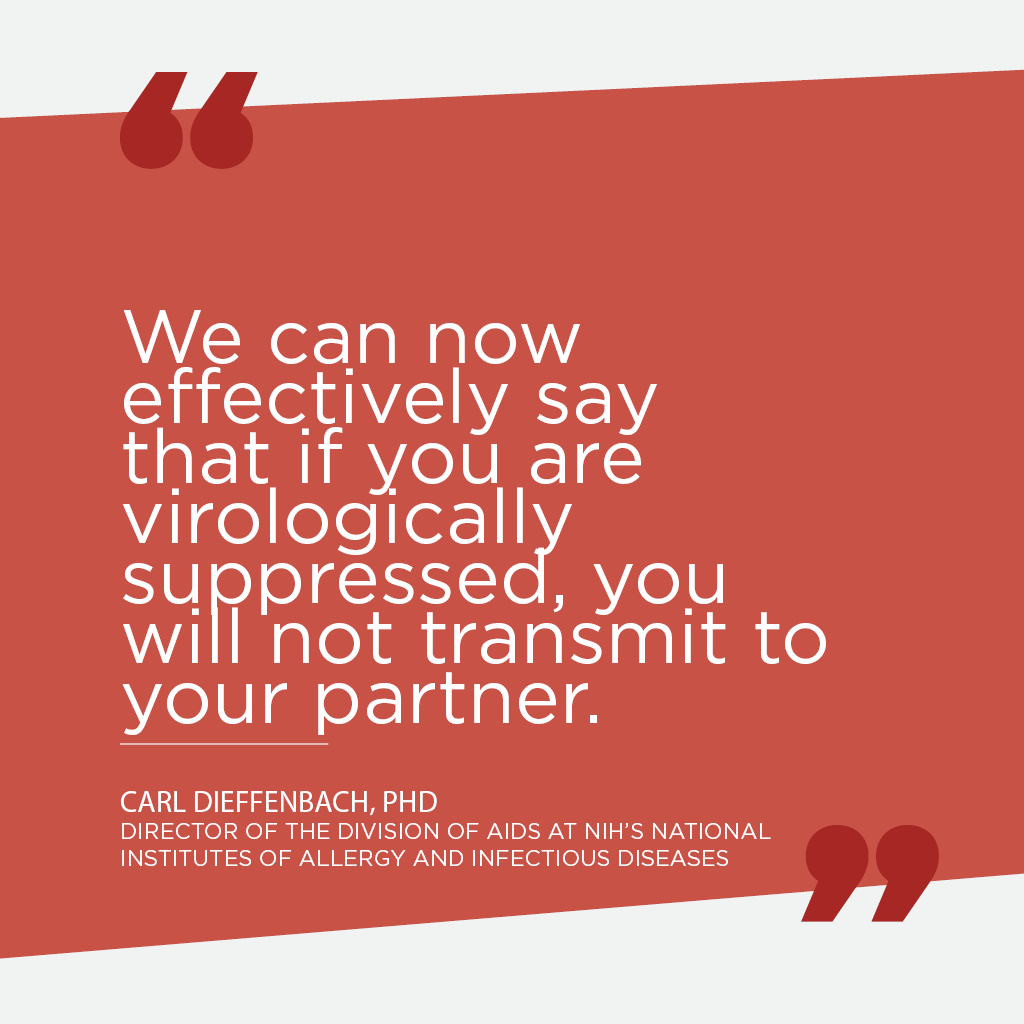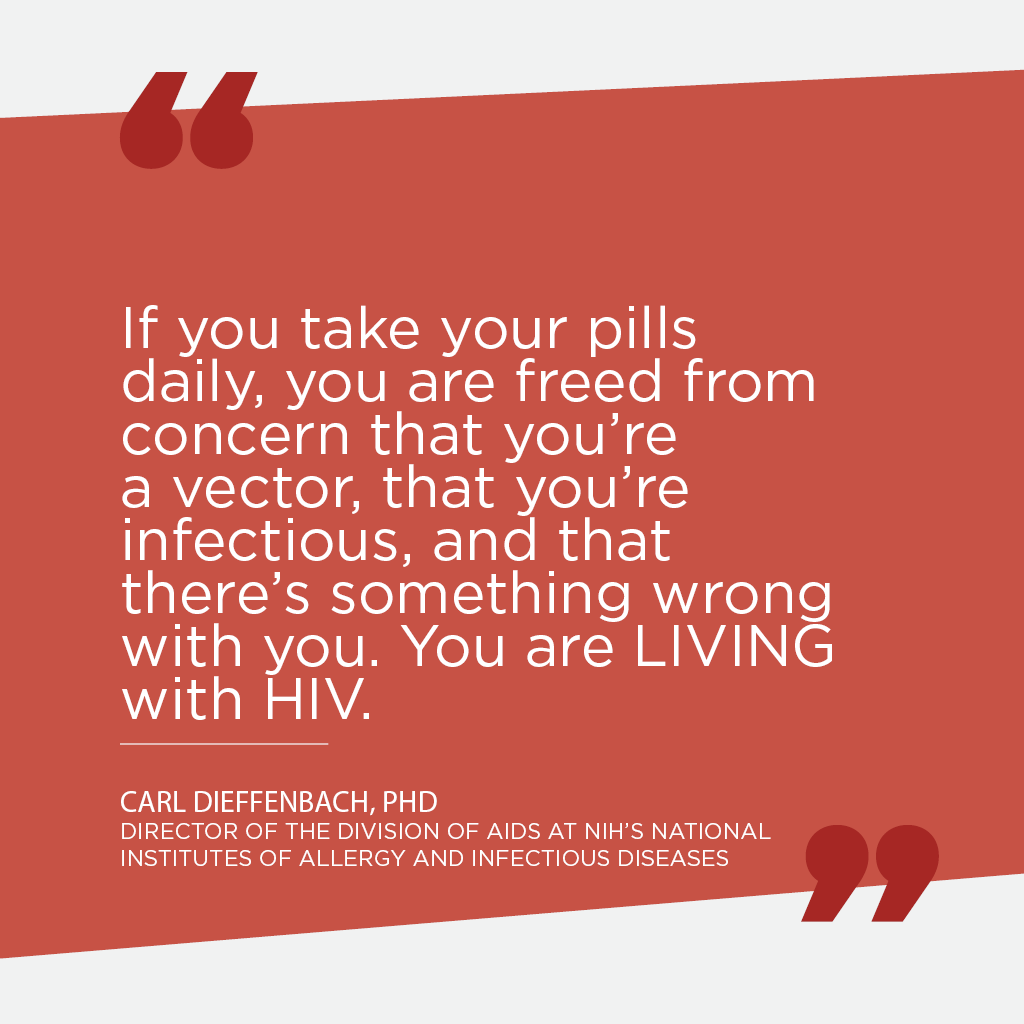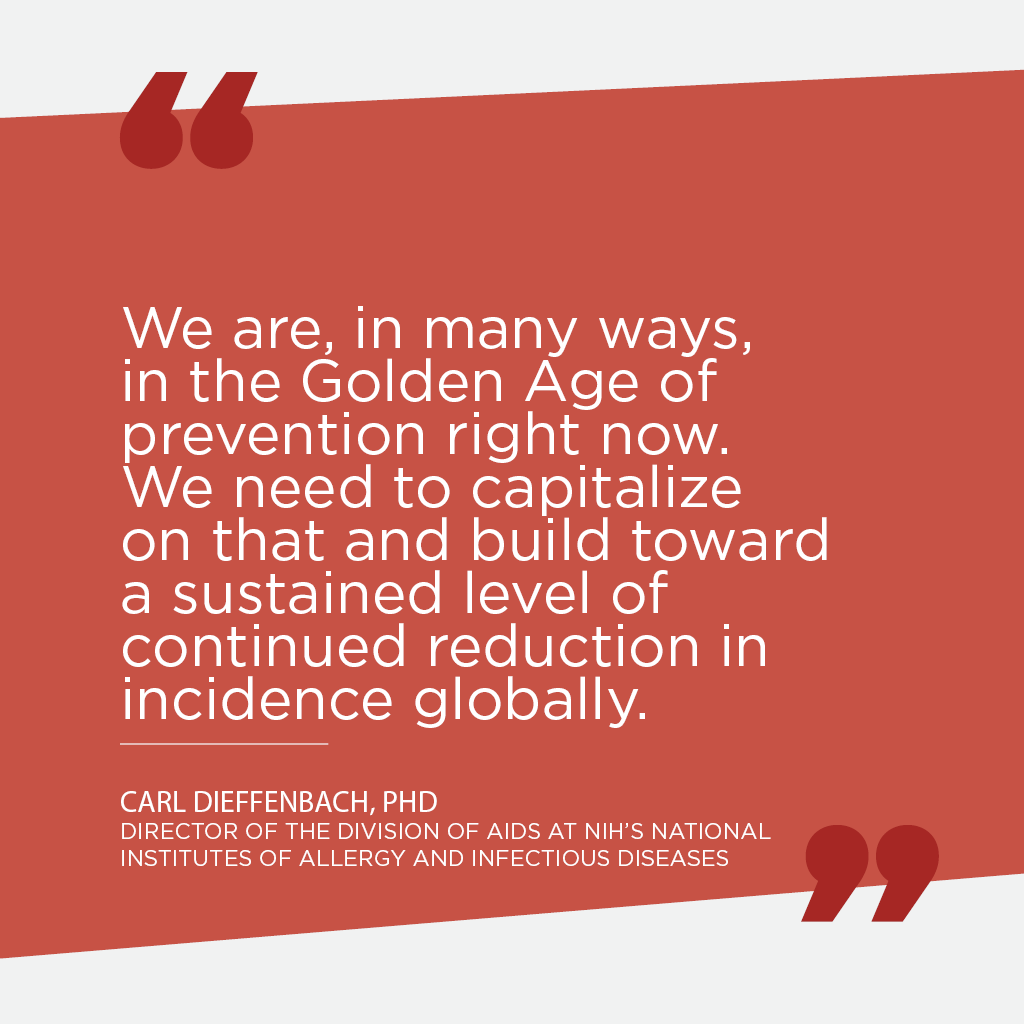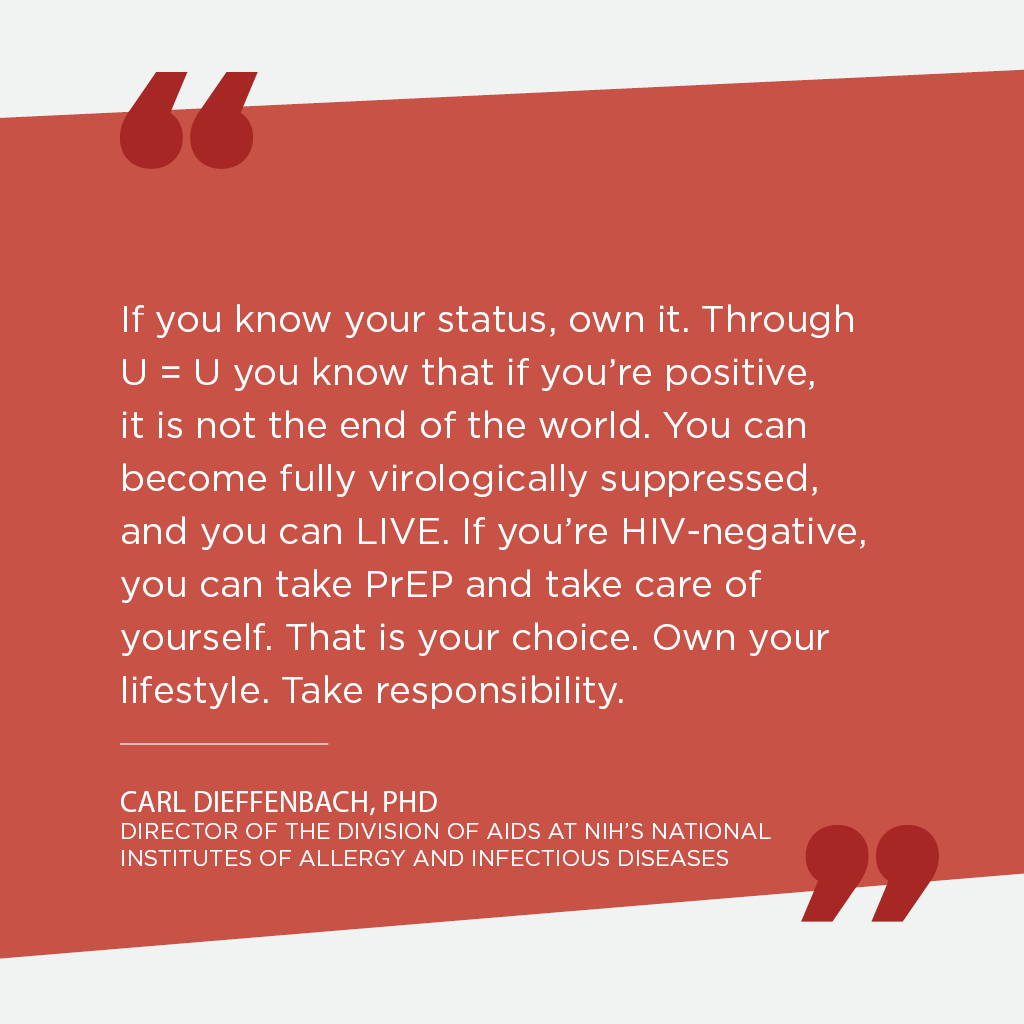Carl Dieffenbach, Ph.D. is the Director of the Division of AIDS at NIH’s National Institute of Allergy and Infectious Diseases (NIAID).
Q: You have dedicated your career to HIV/AIDS research. What drives you to do what you do?
I was in graduate school when AIDS came into the national consciousness. I began thinking long and hard about the causative agent and continued following the development of HIV research as I was finishing graduate school and starting my laboratory. Once I secured a senior postdoctoral and then a faculty position, I had the opportunity to get started in AIDS research. I quickly realized, as the epidemic continued to explode around us, that this was the infectious disease challenge of my generation. I wanted to make a difference.
I started devoting all my energy in the lab to HIV, then an opportunity arose to join NIAID in 1992. I was working in drug discovery and development at that time, which was an amazing time because we were working towards getting new drugs approved. Protease inhibitors came along in 1996 and had a huge impact. It was then that I knew I had made the right choice in committing to researching safe and effective treatments for HIV. Soon, the ACTG 076 trial came along for prevention of perinatal transmission, and we began to realize there was more that could be done with HIV drugs. We started assessing whether drugs could prevent HIV acquisition. Out of this came strategies like treatment as prevention and PrEP. Everything has led to us getting the tools we need to control the epidemic and ultimately end the global pandemic.
 Q: The PARTNER2 study found that “once an HIV-positive person achieves and then maintains viral suppression, there is effectively no risk of transmitting HIV to their HIV-negative partners.” Can you talk a little about the results of this study that was presented at IAS?
Q: The PARTNER2 study found that “once an HIV-positive person achieves and then maintains viral suppression, there is effectively no risk of transmitting HIV to their HIV-negative partners.” Can you talk a little about the results of this study that was presented at IAS?
The PARTNER2 study is absolutely important for gay, bisexual, and other men who have sex with men (MSM) specifically because what was missing from the previous dataset on treatment as prevention and the impact of full virologic suppression on transmission is there were not enough active cases or analysis of coital events between MSM. PARTNER2 enlarged the dataset to a point where we can now effectively say that if you are virologically suppressed, you will not transmit to your partner. It would take a single couple 343 years of sex before they even had the probability of a transmission. Those kinds of absurd numbers tell you how safe it is and how effective antiretroviral therapy is at preventing HIV transmission in couples. Now, there’s no doubt that Undetectable = Untransmittable (U=U). As public health providers, we have to find a way to harness that message and use it to improve all aspects of what we do.
 Q: Looking ahead to the future, what are you most excited about in terms of HIV/AIDS research, particularly with gay, bisexual, and other men who have sex with men?
Q: Looking ahead to the future, what are you most excited about in terms of HIV/AIDS research, particularly with gay, bisexual, and other men who have sex with men?
Globally, we need to raise the standard of care to a point where viral load testing is routine, and U = U can be effectively implemented. We need to stop relying on CD4 counts as an indicator of successful therapy. Having viral load testing adopted universally would be a huge leap forward. Additionally, we need to find a way to put U = U in terms that the public can understand and see just how powerful and how freeing it can be. It needs to be an incentive for people who are HIV positive to get out from under their self-stigma and realize this will free them. If you take your pills daily, you are freed from concern that you’re a vector, that you’re infectious, and that there’s something wrong with you. You are LIVING with HIV.
At the same time, we need to generate tools that anybody can use, such as self-testing. That way, if you hook up with someone, you could take a dipstick, blood spot, or something that tells you if you have the virus in your system. We also need to continue to improve the conversation within communities around U = U. Community leaders who truly understand this concept can get out and explain it, so we aren’t publicly shaming people who choose to use PrEP or who use U = U as a way to claim sexual freedom.
There is another area of emphasis, cure research that remains a gleam in everybody’s eye, which is finding ways to establish sustained virological remission in the absence of therapy. We need to continue to focus on freeing people from any antiretroviral therapy, so they have no virus detectable in their system by traditional methods and are unable to transmit HIV.
 There’s a lot to be excited about right now both domestically and internationally. We are, in many ways, in the Golden Age of prevention right now. We need to capitalize on that and build toward a sustained level of continued reduction in incidence globally.
There’s a lot to be excited about right now both domestically and internationally. We are, in many ways, in the Golden Age of prevention right now. We need to capitalize on that and build toward a sustained level of continued reduction in incidence globally.
Q: You are a long-standing member of the AIDSVu Advisory Committee. What do you see as the value of HIV data visualization?
I think the beauty of AIDSVu is that you can see where the hotspots are. When you watch the evening news, and they’re giving a report on forest fires in the West, you can see where the hotspots are and where people need to concentrate their efforts. AIDSVu can beautifully point out the counties and ZIP codes where we still have a huge problem with the HIV epidemic. If you focus in on the greatest level of ongoing transmission, it can tell you where you need to focus resources, something we need to use data to discover.
Of course, the data is only as good as what we put into it, which is why we need to find a way to speed up the acquisition of data, so we aren’t a year or two or three behind in visualizing the epidemic. As CDC gets into sequencing outbreaks and building a massive database, we need to find a way to identify clusters that need to be snuffed out quickly.
Q: An estimated 1 in 6 gay and bisexual men living with HIV are unaware of their status. With National Gay Men’s HIV/AIDS Awareness Day coming up on September 27, what is your message to the community?
It is time to get back to basics.
What grew out of San Francisco and New York and other communities at the time of the AIDS crisis in the ‘80s was us all coming together and getting tested when it was appropriate. People knew their status and adopted safer behaviors.
If you know your status, own it. Through U = U you know that if you’re positive, it is not the end of the world. You can become fully virologically suppressed, and you can LIVE. If you’re HIV-negative, you can take PrEP and take care of yourself. That is your choice. Own your lifestyle. Take responsibility.
The other key message is to get tested frequently for STIs because HIV is only one part of the problem. Whether you’re gay or straight, STIs still matter. We need to start having honest conversations about STIs because that is the next thing we need to tackle. However, we can’t conflate the risk associated with U = U and the sense of being free to love with the possibility of contracting STIs. That is taking us to a bad place. We need to start having a focused conversation around responsibility. That doesn’t mean shaming, and it doesn’t mean everyone has to wear a condom all the time. It means getting tested, seeing your physician if you have symptoms, and taking care of yourself. By taking care of yourself, you are taking care of the people you love.




